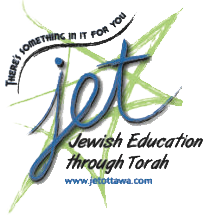D’var Torah by Rabbi Kasriel Gewirtzman
Bamidbar, 22:28: “And HaShem opened the mouth of the she-donkey and it said
to Bilaam, ‘What have I done to you that you struck me these three times (regalim)”.
Rashi, 22:28, “It alluded to him, ‘you are trying to uproot the nation that celebrates
the three festivals in the year’.”
I would like to share a thought that I believe is especially relevant to us today during
these times, when we can no longer easily visit the land of Israel. Bilaam is on his way
to Moav to curse the Jewish people when his she-donkey suddenly refuses to go
further. Bilaam hits her three times, and the donkey miraculously opens her mouth
and asks why Bilaam has, without justification, struck her three times. The Torah uses
the word, regalim for the word ‘times’, instead of the more standard word,
‘pa’amim’. The sages expound that HaShem, through the medium of the donkey, was
communicating to Bilaam that he would be unsuccessful in destroying the Jewish
people because they observe the three “foot” festivals (Shalosh Regalim), Passover ,
Shavuot and Sukkot. The obvious question is what is the connection between the 3
festivals and Bilaam’s journey to curse the Jewish people?
One approach is that the Three Festivals are symbolic of the Three Fundamentals of
Faith that the Sefer Ha’Ikrim outlines: 1) The existence of God, 2) that God gave the
Torah and 3) that God oversees us. These are the basic pillars on which our belief is
built. While all of the Three Festivals have elements of all these fundamentals, it seems
that each of the festivals corresponds in particular to one of the
three. Pesach establishes the existence of HaShem, Shavuos is about the giving of the
Torah, and Sukkot stresses the idea of Hashgacha in that HaShem protected the Jewish
people in the desert.
Bilaam was trying to uproot the Jewish nation, whose foundation is
their faith. Accordingly, HaShem told Bilaam that he would not succeed because of the
people’s strong belief. However, it still needs to be explained further
why specifically the Shalosh Regalim were used as examples of the three pillars
of Emunah. In order to fully answer this, it is instructive to understand another
example of how HaShem showed that Bilaam’s efforts would not succeed because of
the merits of the Jewish people.
When Bilaam set off to curse the Jewish people, the Torah tells us that he got up
(Vayakam) early in the morning. The Midrash says that on seeing
this, HaShem exclaimed, “Rasha! Avraham, their father already superseded you’ as it
says “Vayashkem baboker”, he got up very early in the morning. The words ‘vayakam’
and ‘vayashkem’ both mean getting up from sleep, however ‘vayashkem’ implies getting
up even earlier than ‘vayakam’. Thus, HaShem was telling Bilaam that Avraham arose
earlier in the morning on the way to the Akeida than Bilaam did on the way to cursing
the Jewish people.
What is the significance of this Midrash? Rav Moshe Feinstein explains that Bilaam was
trying to portray the Jewish people in a negative light by showing that he would act with
greater eagerness in his evil than they did in their service of Hashem.
However, Hashem told him that Avraham Avinu, already demonstrated greater
eagerness in doing HaShem’s will than Bilaam did in contradicting it.
Consequently, Avraham’s descendants inherited his characteristic of alacrity and
possessed enough merit to withstand Bilaam’s negative portrayal.
Returning to the allusion to the three festivals, it is possible to suggest that Bilaam was
also attempting to portray the Jewish people in a negative light by demonstrating his
willingness to travel a long way in order to curse the Jewish people, and to contrast it to
the fact that they would not be willing to travel the same distance for the sake
of HaShem. Accordingly, HaShem, through the medium of the donkey, told him that
this argument would also fail, because the Jewish people are indeed willing to travel
long distances for HaShem’s sake, on the Shalosh Regalim where they would all
willingly leave their homes and travel to bring offerings in the Beis HaMikdash.
Two important lessons can be derived from the above explanation. Firstly, the
importance of the Shalosh Regalim because they enable us to instill in ourselves the
foundations of faith. Secondly, it teaches us that the level of effort and our willingness
to travel for the sake of HaShem is of great value and can stand as a merit to protect us
from harm. May we merit the opportunity to observe the Shalosh Regalim in
Yerushalayim.
Shabbat Shalom,
JET Ottawa

